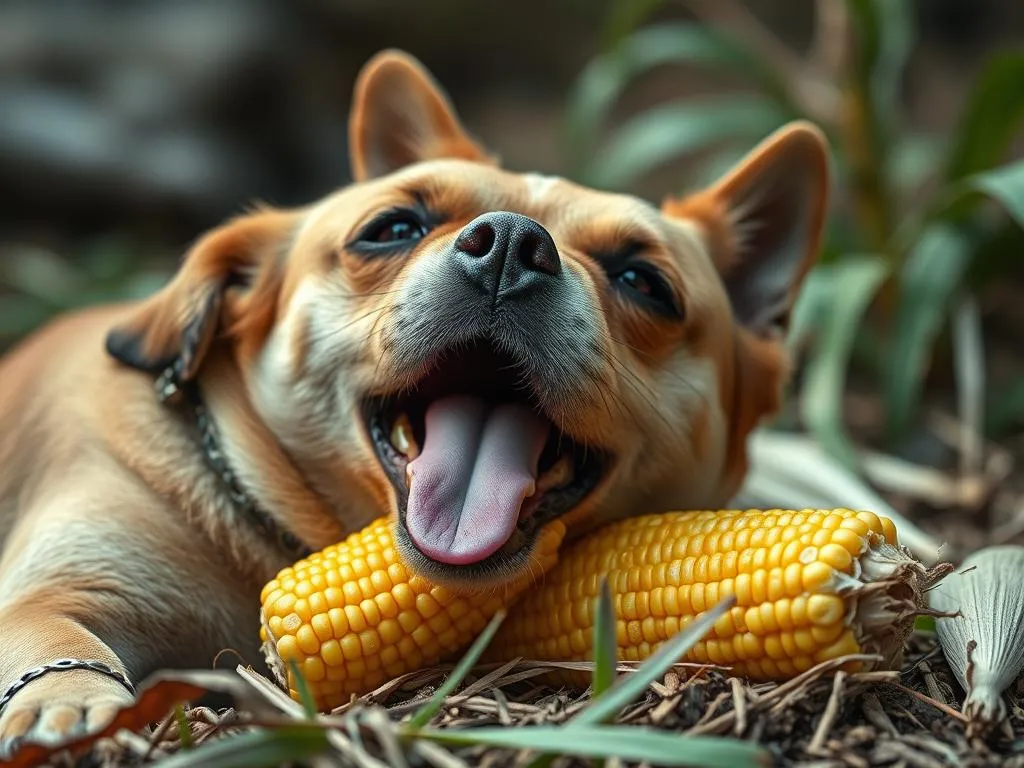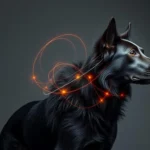
Introduction
Proper care for dogs is essential to their overall health and well-being. Just like humans, dogs can face a variety of health challenges throughout their lives, ranging from minor ailments to serious medical conditions. Among the many issues pet owners must manage, the ingestion of foreign objects is particularly concerning. Dogs, by nature, are curious and often tend to chew on non-food items, which can lead to complications.
One common foreign object that poses a significant risk is the corn cob. While it may seem harmless, corn cobs can cause serious health issues in dogs if ingested. Understanding how long a corn cob will stay in a dog’s stomach is crucial for dog owners, as it can help them make informed decisions about their pet’s health.
Understanding Dog Digestion
The Canine Digestive System
To understand the implications of foreign object ingestion, it’s important to first grasp how a dog’s digestive system works. Dogs are omnivores, meaning they can digest both animal and plant-based foods. Their digestive tract comprises several key components:
- Mouth: Where food is chewed and mixed with saliva.
- Esophagus: A muscular tube that transports food to the stomach.
- Stomach: A muscular organ that further breaks down food using acids and enzymes.
- Small Intestine: Where most nutrient absorption occurs.
- Large Intestine: Responsible for water absorption and feces formation.
One of the key differences between canine and human digestion is the structure and acidity of the stomach. Dogs have a more acidic environment, which aids in breaking down proteins. However, their digestive system is not designed to process large, indigestible objects like corn cobs.
Foreign Object Ingestion
Dogs are naturally inquisitive creatures and often explore the world using their mouths. This behavior can lead to the ingestion of non-food items, which can be dangerous. Common objects that dogs tend to chew on and swallow include:
- Toys
- Bones
- Plastic
- Clothing
- Corn cobs
This propensity for chewing and swallowing foreign objects can lead to serious health issues, including blockages and internal injuries.
Risks of Ingesting Corn Cobs
Why Corn Cobs Are Dangerous
Corn cobs are particularly hazardous for dogs due to their tough, fibrous structure. Unlike the corn kernels, which are soft and digestible, the cob itself is essentially indigestible. When a dog swallows a corn cob, it can become lodged in the digestive tract, leading to a blockage. This situation can result in severe complications, including:
- Bowel Obstruction: A complete blockage can prevent food and waste from passing through the intestines, which is a medical emergency.
- Perforation: Sharp edges of the cob can puncture the intestinal wall, leading to internal bleeding and infection.
Symptoms of Corn Cob Ingestion
If a dog has ingested a corn cob, several symptoms may arise. Recognizing these signs early is crucial for ensuring timely veterinary care. Common symptoms include:
- Vomiting: Frequent attempts to vomit or actual vomiting can indicate digestive distress.
- Abdominal Pain: Signs may include whining, reluctance to move, or a hunched posture.
- Constipation: Difficulty passing stool can signal a blockage.
- Loss of Appetite: A sudden change in eating habits can be a red flag.
When to Seek Veterinary Care
Monitoring your dog after suspected corn cob ingestion is critical. If you observe any of the aforementioned symptoms, or if your dog exhibits unusual behavior, veterinary care should not be delayed. Situations that warrant immediate attention include:
- Persistent vomiting
- Severe abdominal pain
- Lack of bowel movements for over 24 hours
- Any signs of lethargy or distress
How Long Will a Corn Cob Stay in a Dog’s Stomach?
Factors Influencing Digestion Time
Determining how long a corn cob will remain in a dog’s stomach is not straightforward. Several factors can influence digestion time, including:
- Size and Breed of the Dog: Larger breeds may pass objects more quickly than smaller breeds.
- Amount of Corn Cob Ingested: A single kernel may pass through more easily than an entire cob.
- Overall Health and Age of the Dog: Younger, healthy dogs may process food faster than older dogs with health issues.
Estimated Timeframe for Digestion
In general, food can take anywhere from 8 to 12 hours to move through a dog’s stomach and into the intestines. However, for foreign objects like corn cobs, the timeframe may vary significantly. On average, it can take anywhere from 24 to 72 hours for a corn cob to pass, assuming no blockages occur.
Potential Complications
Prolonged retention of a corn cob in the digestive system can lead to severe complications. If the cob does not pass and remains lodged in the intestines, it can result in:
- Bowel Necrosis: A lack of blood flow can cause parts of the intestines to die, necessitating surgical intervention.
- Sepsis: An infection that can spread throughout the body, leading to life-threatening conditions.
Timely intervention is crucial. If you suspect your dog has ingested a corn cob, seek veterinary advice as soon as possible.
Prevention Strategies
Keeping Your Dog Safe
Preventing foreign object ingestion is paramount for dog owners. Here are some effective strategies:
- Supervision: Always supervise your dog during playtime and mealtime.
- Dog-Proofing: Remove items that could be dangerous from your dog’s environment.
- Training: Teach commands like “leave it” to discourage your dog from picking up harmful objects.
Safe Alternatives to Corn Cobs
Instead of giving your dog corn cobs, opt for safer chew alternatives that provide the same satisfaction without the risks. Some excellent options include:
- Rubber Chew Toys: Durable and designed for heavy chewing.
- Rawhide Chews: Offer a satisfying texture and can keep dogs entertained.
- Dental Chews: Help maintain oral health while satisfying chewing instincts.
Providing safe chewing experiences will not only keep your dog entertained but also reduce the likelihood of foreign object ingestion.
What to Do if Your Dog Ingests a Corn Cob
Immediate Steps to Take
If you believe your dog has ingested a corn cob, it’s essential to act quickly. Here’s what you can do:
- Assess the Situation: Determine how much of the corn cob was ingested and when it happened.
- Monitor Symptoms: Keep an eye on your dog for signs of distress or illness.
- Do Not Induce Vomiting: Unless directed by a veterinarian, do not attempt to make your dog vomit, as it may cause more harm.
Possible Veterinary Treatments
If your dog shows concerning symptoms or if you know they have ingested a corn cob, veterinary treatment may be necessary. Potential treatment options include:
- Inducing Vomiting: If the ingestion was recent and the dog is stable, a vet may induce vomiting to remove the corn cob.
- Endoscopy: In some cases, a veterinarian may use an endoscope to retrieve the object without invasive surgery.
- Surgery: If the corn cob has caused a blockage or has perforated the intestine, surgical intervention may be required.
Conclusion
Understanding the risks associated with corn cob ingestion is vital for every dog owner. Monitoring your dog’s behavior and knowing the signs of distress can lead to timely intervention, which is crucial for their health. Maintaining vigilance and providing safe alternatives can significantly mitigate the risks of foreign object ingestion. Regular consultations with a veterinarian will ensure that your dog remains healthy and happy.
FAQs
Common Questions About Dog Health and Ingestion
How can I tell if my dog is experiencing a blockage?
Look for signs such as vomiting, abdominal pain, constipation, or loss of appetite. If you notice any of these symptoms, contact your veterinarian immediately.
What should I do if I suspect my dog has eaten something dangerous?
Monitor your dog for symptoms and contact your vet for advice on whether immediate action is needed.
Are there specific breeds more prone to ingesting non-food items?
Certain breeds, particularly those with strong chewing instincts like terriers and hounds, may be more likely to ingest non-food items. However, all dogs can be curious and prone to this behavior.









